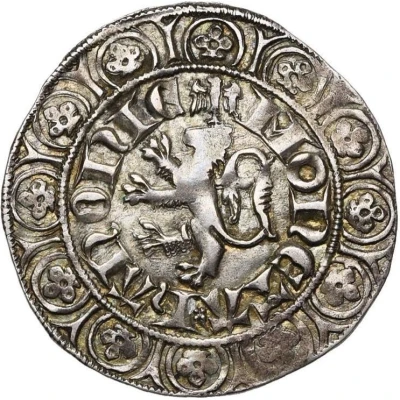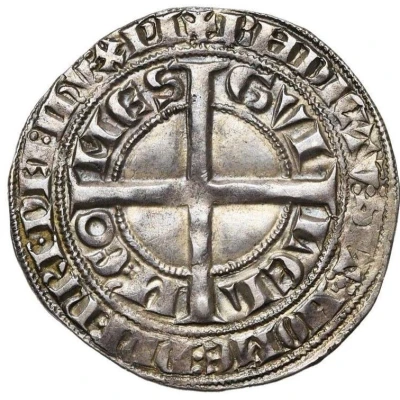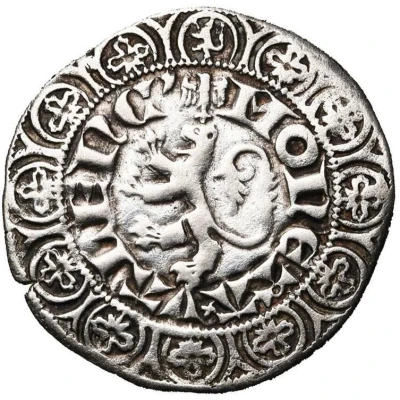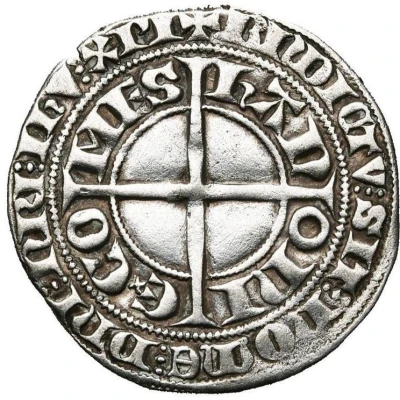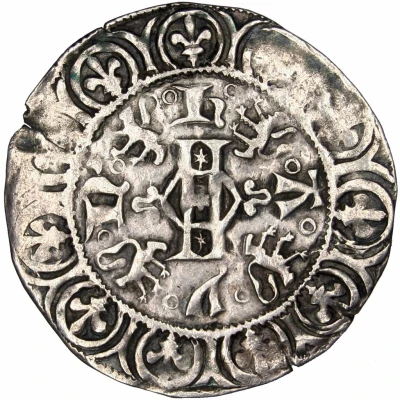
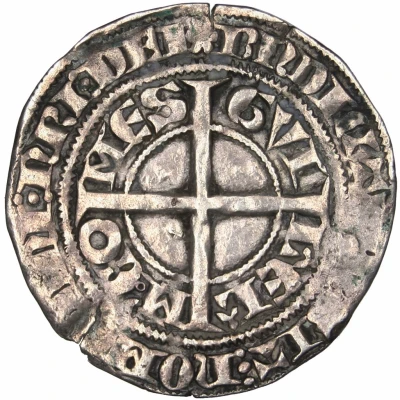

© Comptoir des Monnaies
Groat - William II ND
| Silver | 2.3 g | 24.5 mm |
| Issuer | County of Hainaut (French States) |
|---|---|
| Count | William II (1337-1345) |
| Type | Standard circulation coin |
| Years | 1338-1339 |
| Value | 1 Groat |
| Currency | Gros (1071-1506) |
| Composition | Silver |
| Weight | 2.3 g |
| Diameter | 24.5 mm |
| Shape | Round (irregular) |
| Technique | Hammered |
| Demonetized | Yes |
| Updated | 2024-10-04 |
| Numista | N#95648 |
|---|---|
| Rarity index | 97% |
Reverse
Cross pattée dividing interior legend
Script: Latin
Lettering:
(Interior): GVI-LEL-M’° CO-MES
(Exterior): ❀ BnDICTVM ⋮ SIT⋮ nOME ⋮ DnI ⋮ nRI ⋮ DEI .
Unabridged legend:
Guilelmus comes
Benedictum sit nome domini nostri dei
Translation:
(Interior): Count William
(Exterior): Blessed be the name of our Lord God
Comment
Also known as a denier a l'eskieletteInteresting fact
One interesting fact about the Standard circulation coin Groat - William II ND (1338-1339) from County of Hainaut (French States) made of Silver weighing 2.3 g is that it was minted during a time of great economic and political change in Europe. The coin was issued during the reign of William II, who was the Count of Hainaut from 1337 until his death in 1345. During this time, the County of Hainaut was part of the French States, and the coinage was heavily influenced by the French monetary system. The Groat was a widely used denomination during this period, and it was equivalent to four deniers or 1/60 of a livre tournois. Despite its small size, the coin was made of silver, which gave it a significant value and made it a popular trade coin throughout Europe.
